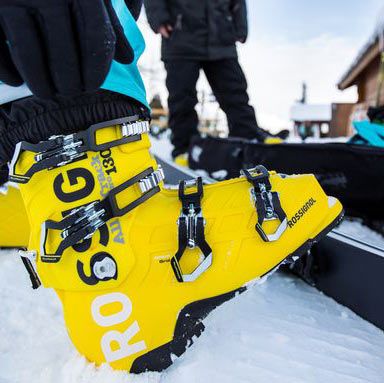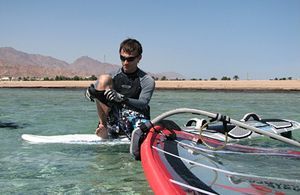 How to Choose the Right Wetsuit
A wetsuit is a type of specialized clothing designed to minimize the effects of water on the human body, retain heat, and protect against potential injuries and damage. This kind of protection is essential not only for athletes but also for travelers, hunters, fishermen, divers, and individuals performing tasks in aquatic environments. Naturally, the requirements for a wetsuit vary for each category. Therefore, let’s dive deeper into the different types, features of wetsuits, how to choose them, and what to pay attention to when purchasing one.
How to Choose the Right Wetsuit
A wetsuit is a type of specialized clothing designed to minimize the effects of water on the human body, retain heat, and protect against potential injuries and damage. This kind of protection is essential not only for athletes but also for travelers, hunters, fishermen, divers, and individuals performing tasks in aquatic environments. Naturally, the requirements for a wetsuit vary for each category. Therefore, let’s dive deeper into the different types, features of wetsuits, how to choose them, and what to pay attention to when purchasing one.
In general, wetsuits can be categorized based on several parameters.
 The main material of a wetsuit is neoprene
The first parameter is the thickness of the material used to create the wetsuit.
The main material of a wetsuit is neoprene
The first parameter is the thickness of the material used to create the wetsuit.
Typically, the material is neoprene, though sometimes rubberized fabric is used. Neoprene has gained popularity because of its properties: it stretches well in all directions, is lightweight, and provides good thermal insulation thanks to air bubbles in its micro-pores.
The thickness of neoprene in wetsuits can range from 1 mm to 11 mm. This thickness determines how much freedom of movement the suit allows—the thinner the material, the more agile the swimmer.
In thinner wetsuits, areas subject to the most friction—like the knees, elbows, and armpits—are often reinforced with thicker material. In some wetsuits, there might be three different thicknesses used in various sections. These are called combination wetsuits, offering improved mobility while providing enhanced protection for the body.
Wake surfing Can those who don’t live by the ocean still go surfing? Wake surfing was invented specifically for such cases. Learn more about wake surfing here .
Typically, diving is done below sea level. But there’s a special kind of diving that involves setting records for altitude! Read more here .
Additionally, some wetsuit models feature a thin layer of rubber coating on top of the neoprene, making the suit impermeable but significantly reducing its flexibility. For ease of donning and improved thermal insulation, neoprene is sometimes lined internally with nylon, plush, or titanium coating for extra comfort.
Types of Wetsuits
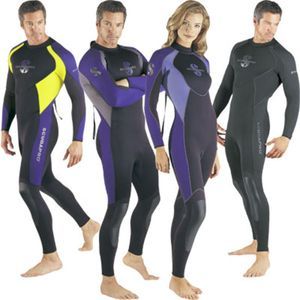 Dry, wet, and semi-dry wetsuits
Dry wetsuits are completely watertight. They are designed for use in cold water.
Dry, wet, and semi-dry wetsuits
Dry wetsuits are completely watertight. They are designed for use in cold water.
These suits often fit snugly against the swimmer’s body. In other models, the tight seal is concentrated on the neck, wrists, and ankles, allowing for an additional layer of clothing underneath.
Dry wetsuits are made from neoprene 5 mm thick or more. They may not be the most comfortable, but they excel at keeping you warm.
Such suits are indispensable for divers descending to great depths or engaging in ice diving. They are also used by professionals performing underwater tasks such as search-and-rescue, welding, or assembly operations.
As the key feature of dry wetsuits is their complete waterproofing, they are usually designed as coveralls with enclosed feet, long sleeves, and, often, an attached hood.
Semi-dry wetsuits have a thickness range of 3 to 6 millimeters. These are also typically full-body suits, as they can be used outdoors in conditions of high humidity and wind, as well as under shallow water.
These suits are predominantly worn by diving and spearfishing enthusiasts. They are also suitable for winter fishing. Additionally, these suits are invaluable for rafting fans, as paddling down rapids often involves navigating cold mountain rivers.
Wet wetsuits are the lightest option for this type of gear. Their thickness can be as little as 1 millimeter. The thermal insulation relies entirely on the air in neoprene pores. Therefore, these suits are most comfortable in water temperatures of 15 degrees Celsius or higher.
They are frequently used by divers in warm seas and also make excellent attire for surfers.
Wetsuit Design
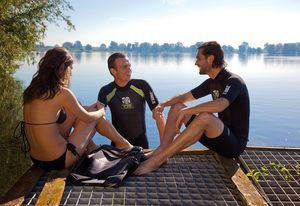 Wetsuit for surfing
with short arms and legs (suitable for surfing and rafting enthusiasts);
Wetsuit for surfing
with short arms and legs (suitable for surfing and rafting enthusiasts);with fully long sleeves and pants (dry and semi-dry wetsuits are made in this modification);
combined options with long pants and shortened sleeves (suitable, for example, for surfers, as they protect the knees).
Movies about surfers A collection of the best movies about surfers is available on our website.
Need help deciding what suits you better - skiing or snowboarding? Check out the article on this page .
Wingsuit flying is one of the most dangerous sports. Read more about it .
How to Choose the Right Wetsuit
 Wetsuits for diving
Pay attention to several key factors. The first of these is your personal physical condition: the thickness of the wetsuit you choose will depend on how well you cope with cold and heat.
Wetsuits for diving
Pay attention to several key factors. The first of these is your personal physical condition: the thickness of the wetsuit you choose will depend on how well you cope with cold and heat.
You should also determine the climatic features of the location where you plan to use the wetsuit. In particular, you need to know the water temperature and wind strength during specific seasons. This will not only help in choosing the type of wetsuit but also in picking accessories like a hood, gloves, socks, or footwear.
As mentioned above, the choice of wetsuit also depends on the type of water activity you will be engaging in. The speed and ease of movement in such gear depend on its thickness. For example, a heavy deep-water dry suit would only hinder someone engaged in underwater hunting. Conversely, wearing a thin wetsuit in water deeper than 10 meters might expose the person to a high risk of hypothermia.
Try on the chosen model. Ideally, the wetsuit should fit snugly against the body, especially for wet and semi-dry options. Minor folds are acceptable only in the underarm area and should be minimal.
After putting on the wetsuit for the first time, walk around in it for 5–10 minutes. If no discomfort or pressure in the chest or neck area is felt during that time, the wetsuit is a good fit.
Besides the neoprene thickness, pay attention to the quality of the seams. High-quality models have stitched seams that are additionally rubberized on the surface.
In hunting wetsuits, check for a Kevlar plate on the chest, which serves as a rifle brace. Professional deep-water wetsuits often come with reinforced patches on the knees, elbows, underarms, and inner thighs.
The most renowned wetsuit suppliers in our country are Speedo and Sargan.
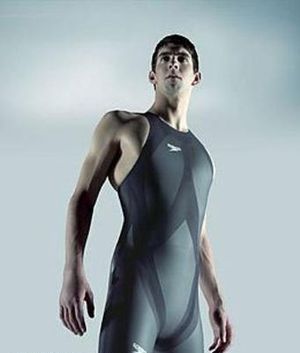 Speedo Wetsuit
The first brand is globally recognized for its LZR Racer wetsuit line, famously used by world swimming champion Michael Phelps during his record-breaking swims. The company has since improved its proprietary material used in creating wetsuits and launched the advanced LZR Racer Elite 2 models. These suits are known for their enhanced lightness and improved hydrodynamics.
Speedo Wetsuit
The first brand is globally recognized for its LZR Racer wetsuit line, famously used by world swimming champion Michael Phelps during his record-breaking swims. The company has since improved its proprietary material used in creating wetsuits and launched the advanced LZR Racer Elite 2 models. These suits are known for their enhanced lightness and improved hydrodynamics.
Sargan wetsuits are popular among hunting and diving enthusiasts. They stand out for their intriguing design, reasonable pricing, and good quality. The flagship model of the lineup, the Sargan Senezh, features the advanced WaterStop function and high-quality bonding.
Hence, selecting a wetsuit to your taste is not overly complicated but does require attention to certain details.
The main advice for those planning to purchase this specialized gear: choose reputable brands, rely on common sense and personal comfort, take your time during fitting, and you’ll enjoy any type of water sports to the fullest.


